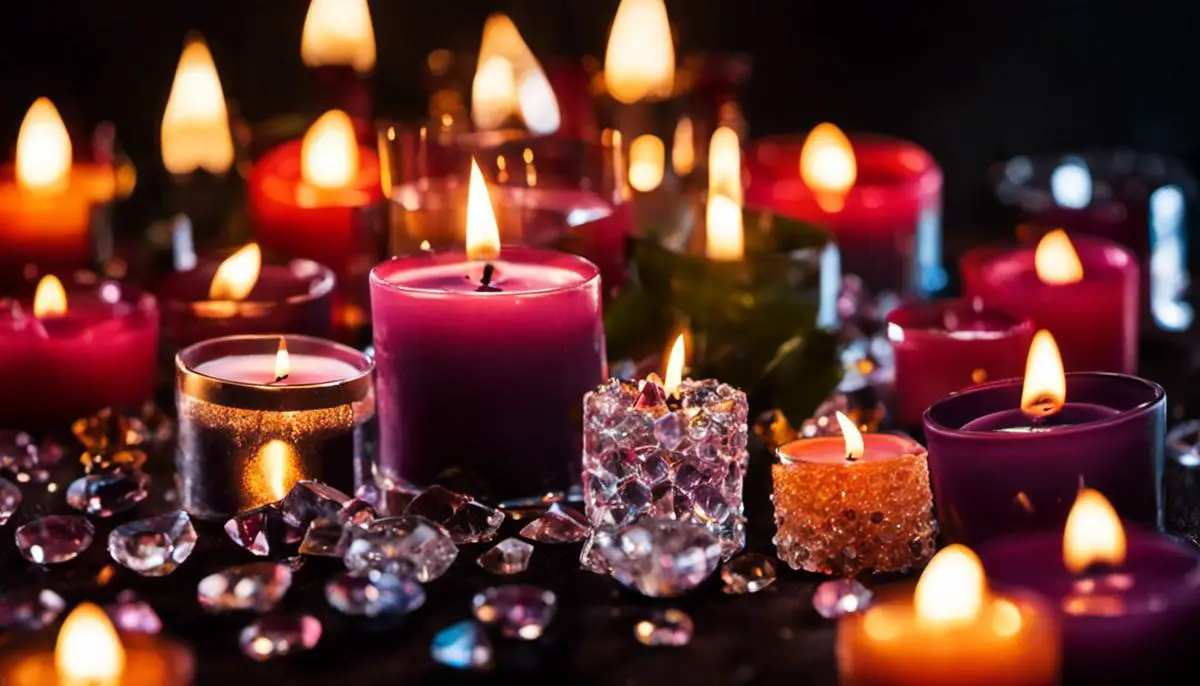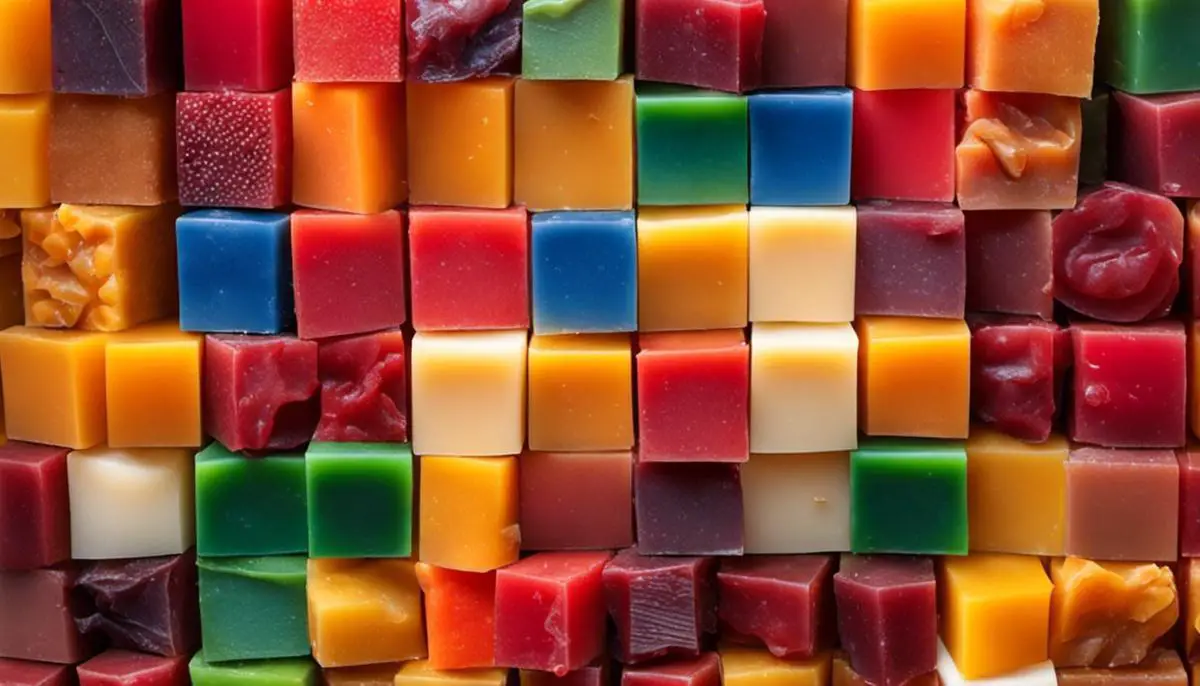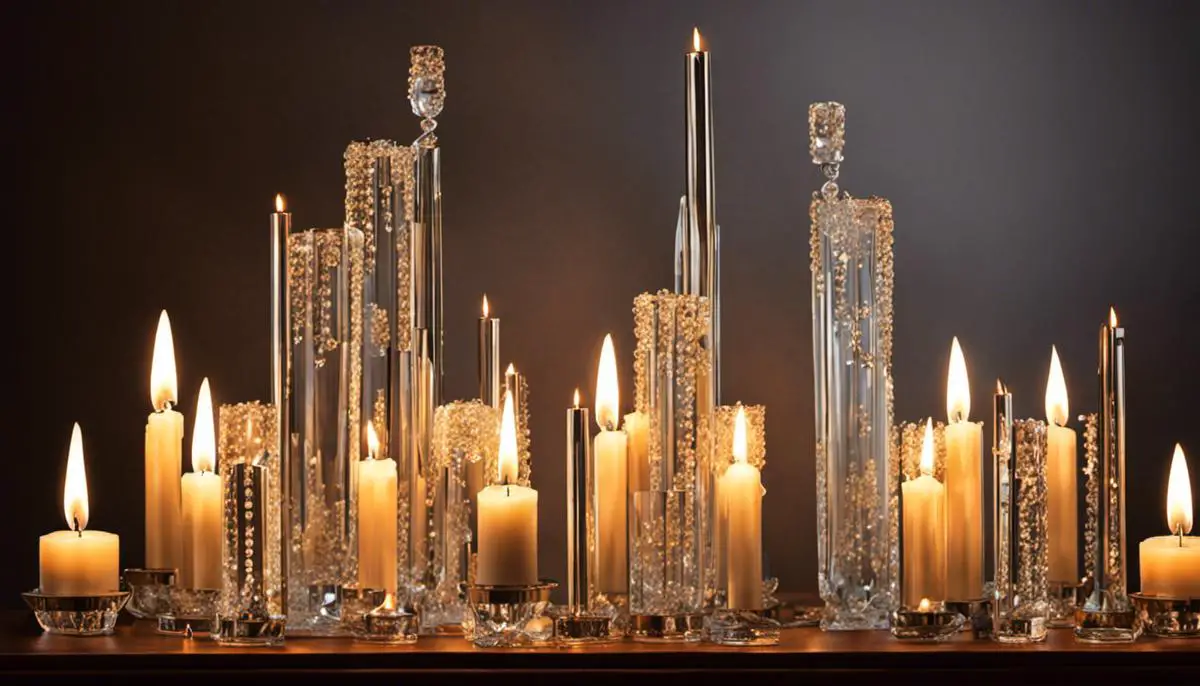Setting the ambiance with a flicker of a candle flame is truly beguiling, yet incorporating the beauty of crystals into this scene escalates it to another level of alluring elegance. But, as enchanting as it might seem, one can’t ignore the potential hazards associated with this stylish blend. This discussion embarks on the journey of understanding the delicate and safe harmonization of crystals in candles.
It starts with deciphering various types of crystals, their attributes, melting points, and any probable toxin release upon heating – all crucial in assessing their safety and suitability for your candles. But the exploration does not stop there; it further delves into the fundamental processes of candle making – the wax type, melting temperatures, safety protocols, and molding and cooling mechanisms. Only by mastering these aspects can one safely and effectively embed crystals in a candle. We also uncover the art and science of integrating crystals into candles, sharing insights on how to position them strategically to evade fire risks.
Understanding Crystals
Types of crystals used in candles and their properties
There are several types of crystals that are commonly used in candles, each with diverse properties. Some popular choices include quartz, amethyst, rose quartz, and citrine. Quartz crystal is often used for its clarifying and amplifying properties. Amethyst, on the other hand, is known for promoting calm and balance. Rose quartz is used for its loving and gentle energies, while citrine is known for its ability to bring abundance and wealth.
Understanding the melting point of crystals
Another vital point to consider when embedding crystals in candles is their melting points. Crystals are incredibly resistant to heat and have a high melting point. For instance, Quartz, one of the most commonly used crystals, has a melting point of 1670 °C (3038 °F). Given that the average burning temperature of a candle is far less—around 1800°F at the highest—crystals used in candles will not melt. Nevertheless, caution should still be used when placing crystals too near to the flame or repeatedly heating and cooling the crystals, as this could potentially lead to cracks in the crystal structure.
Potential toxins released by crystals when heated
Understanding if a crystal releases toxins when heated is integral to ensuring safety. A majority of crystals are safe and will not emit any toxic fumes when exposed to the heat of a candle. However, crystals like Malachite, Cinnabar, or Realgar contain harmful elements like copper and mercury and should be avoided.
Safe and correct placement of crystals in candles
The safe placement of crystals in candles is also crucial. Since crystals do not melt at the temperature a candle burns, they will not be consumed by the flame. However, as the wax melts away, the crystals might move closer to the flame. To prevent this from happening and to ensure a stable burn, crystals should be placed at least 1.5 inches away from the wick. Lean towards the exterior of the candle when placing your crystal, and always keep an eye on it while burning.
Conclusion
In conclusion, it is generally safe to put crystals in candles, provided that the appropriate crystals are selected, they are accurately placed, and precautions are taken to prevent the crystals from moving too close to the flame as the candle burns. Always do your research first, and be aware of the properties, melting points, and any potential toxins related to the particular crystals you want to use in your candles.
Precautions while using crystals in candles
While it is generally safe to use crystals in candles, there are a few precautions to keep in mind. Always keep candles within sight while they are burning, and never leave them unattended. Be extra cautious when the candle flame gets close to the crystal. While crystals generally don’t have a low melting point, it’s always better to prevent direct contact with the flame. After the flame is put out, allow the crystal to cool before handling it as it has been exposed to heat and may be hot.

Candle Making Basics
Types of Candle Wax
Candle wax comes in different types: paraffin, soy, palm, beeswax, and blends of these. Each type has its own melting point, scents compatibility, and aesthetic effect. Paraffin wax is a popular choice due to its versatility and easy access, while soy wax is favored due to its low melting point and eco-friendly nature. Some people also prefer beeswax for its natural honey scent.
Wax Melting Temperatures
Each wax type requires a different melting temperature. Generally, the optimal temperature for melting wax is between 160-180 degrees Fahrenheit for paraffin, 120-180 degrees for soy, and around 145-175 degrees for beeswax. A double boiler system is recommended for melting the wax as it allows even heat distribution.
Safety Precautions
Safety should be the priority when making candles. Avoid direct heat when melting the wax, instead use a double boiler to prevent overheating. Always use heat-resistant containers for molding candles and never leave the wax unattended while it’s being melted or solidifying. Keep a fire extinguisher nearby in case of accidents.
Molding and Cooling Process
Once the wax has melted, cool it down a little before adding colorants or fragrances. Stir gently to ensure even mixing. Pour the slightly cooled wax into a container prepped with a wick. Leave enough space at the top to embed your crystals. When the wax is almost solidified, place your crystals onto the top of the candle and gently press down just enough so that they are seated securely but not fully submerged. The candle should then be left undisturbed in a cool, non-draughty area to completely solidify.
Embedding Crystals in Candles
Embedding crystals into candles is safe as long as they remain on the candle’s surface. Always place the crystals when the wax starts to solidify to prevent them from sinking. Crystals should be small and flat enough to not affect the candle’s burn. Never let the flame come into direct contact with a crystal as extreme heat can make some crystals fracture or shatter. It’s also important to note that one should never leave candles, especially those with embedments like crystals, unattended while they are burning. Use the candle safely and responsibly, and enjoy the unique ambiance created by the glowing crystal on the candle’s surface.

Combination Techniques
Understanding the Basics of Crystal Candle Making
Crystal candles are unique creations that offer a combination of natural beauty and the spiritual benefits of crystals. However, incorporating these elements into candles involves understanding certain safety measures. Knowing the properties of the crystals and how they react to heat is essential to mitigate potential risks.
Choosing the Right Crystals
The first step in safely combining crystals and candles involves selecting the right crystals. Certain crystals, like selenite, can be hazardous if placed too close to a heat source. Therefore, always research the type and properties of the crystal before the candle-making process begins. Picking heat-resistant crystals such as quartz or amethyst can be a safer choice.
Placement of Crystals
Strategically placing the crystals in or around your candles can also minimize safety risks. For one, placing the crystals on the surface of the candle assures that they stay cooler than if they were submerged in the wax. Another safe option is to place them around the base of the candle rather than directly on top. This keeps the crystals far away from the flame, reducing the risk of overheating.
Creating Heat Resistant Cages or Crystal Cases
Encasing your crystals in a heat-resistant cage or case offers an extra layer of safety. These cages allow the candle’s light to shine through, enhancing the crystal’s natural beauty while keeping them safe from the flame. You can make these cages/cases from stones like agate, which is heat-resistant, or buy heat-proof encasements available on the market.
The Importance of Regular Supervision
While creating and using a crystal candle, regular supervision is crucial. Never leave a lit candle unattended, especially if it includes elements like crystals. Always extinguish the candle before the flame reaches the crystal. This can prevent potential overheating that presents a safety hazard.
Despite the necessary precautions, crystal candles can be safe, beneficial, and aesthetically pleasing ornaments. With mindful considerations of crystal selection, placements, and heat resistance, the process of combining crystals with candles can be safe and rewarding.

Refining the balance between the manifold world of crystals and the warmth of candles brings a unique charm and tranquility to your surroundings. However, the allure of this integration should never compromise safety. The key lies in understanding the properties of the crystals, and mastering the basics of candle making, as well as learning the techniques to safely combine the two elements. By examining these factors carefully and applying due caution, you can mitigate potential risks while preserving the aesthetic appeal of the crystals. With the right crystals, an insightful placement strategy, and robust knowledge about candle-making, you can seamlessly incorporate crystals into candles, ensuring a brilliant display that illuminates while invoking peace and serenity into your space.



